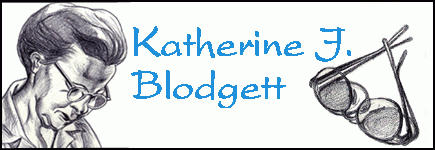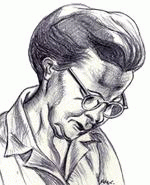Katherine Blodgett
With a master's degree in hand at age 19, Katherine Blodgett (1898-1979) was the first female scientist to be hired by General Electric's Research Laboratory in Schenectady, New York in 1917. She first assisted Irving Langmuir (Nobel Prize in Chemistry, 1932) with his work on monomolecular coatings - oily chemical compounds that cover the surface of water, metal, or glass in a film precisely one molecule thick. Later, Blodgett became the first woman to earn a PhD in Physics from Cambridge University in 1926. She then returned to Schenectady, and soon she, the assistant, outdid her mentor.
Langmuir's monomolecular coatings were a scientific curiosity awaiting a practical application. In the late 1930s, Blodgett found a way to add molecule-thick layers to metal and glass one at a time. She realized that just as these films reduced glare on the surface of water, they could reduce the glare reflected off of glass. (Even the clearest glass reflects 8-10% of the light shining on it. This is why we can see glass if we look at it straight on.) Eventually, Blodgett discovered a thickness of barium stearate film whose own reflection of light would precisely cancel out the reflection from the clear glass underneath – resulting in the world's first 100% transparent, or truly "invisible" glass.

Blodgett received patent #2,220,660 (March 16, 1938) for the "Film Structure and Method of Preparation" that gave the world invisible glass. Now, for the first time, eyeglasses, telescopes, microscopes, and camera and projector lenses could allow images to pass through without any distortion. In World War II, Blodgett's glass was used in periscopes, range finders, and aerial cameras. Since then, Blodgett's coatings have found many diverse applications, including making airplane wings ice-resistant and even artificial rainmaking.
No less impressive was the "color gauge" that Blodgett developed for measuring the thickness of these films – so thin that 35,000 layers are no thicker than a sheet of paper! For both her product and her methods, Katherine Blodgett has become a legend of American science.


